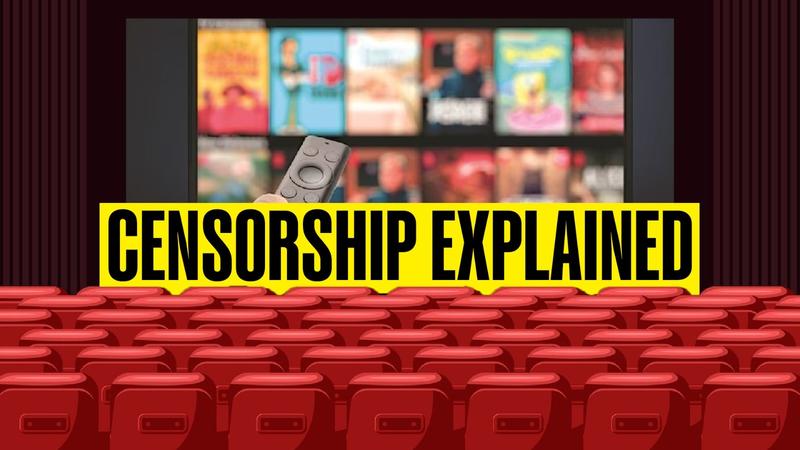Published 18:40 IST, November 27th 2024
OTT Vs Movie Censorship Laws Explained: What Roles Information & Broadcasting Ministry, CBFC Play?
As the debate continues over the need to regulate content on OTT, here is how the censorship rules differ for theatrical releases and streaming sites.

OTT vs Movie Censorship Laws: Union minister Ashwini Vaishnaw on Wednesday (November 26) emphasised the need to make existing laws stricter to curb vulgar content on social media platforms. The Information and Broadcasting Minister's remarks ring true for censorship on streaming services, which have long been under the government's review for nudity, abusive language and religious content.
As the debate continues over whether or not there is a need to regulate content on OTT, here is how the censorship rules differ for theatrical releases and streaming platforms like Netflix, Prime Video and more.

Censorship on OTT: How does it work?
Censorship on OTT can work in two ways: self-regulation by the platform or censorship by the government. Censorship may be applied by OTT platforms to comply with local laws. For instance, a streaming service may choose to remove certain shows or movies that depict violence, or that include offensive language or hate speech.

In other cases, censorship may be imposed by governments, which can order platforms to remove certain content or block access to the platform altogether.
Who is responsible for the censorship of content on OTT?
In India, censorship on OTT platforms is regulated by the Ministry of Information and Broadcasting (MIB), which has the authority to issue guidelines and regulations for digital content providers. Over the past years, MIB has issued some guidelines to curb offensive or inappropriate content on OTT platforms. Age classification of content and mandatory parental controls are some ways through which content has been regulated on digital platforms.
The government of India has also given the power to the Internet And Mobile Association Of India (IAMAI) to self-regulate and monitor the content. IAMAI had set up a Digital Content Complaints Council (DCCC) to self-regulate streaming content on various platforms including OTTs.

The DCCC investigates complaints and takes action against streaming platforms if they are found to have violated the guidelines set by IAMAI. This includes removing, blocking, or requiring a rating, warning, or any other type of notice on the content.
According to a law journal, in addition to the IAMAI, there are also other organisations that monitor and regulate digital content in India. Indian Broadcasting Foundation (IBF) and the News Broadcasters Association ( NBA ) are some of the bodies.
Censorship laws for movies: the role of CBFC
The Central Bureau of Film Certification (CBFC) is a statutory body operational under the Cinematography Act, 1952. It regulates the content of films that are brought into the public domain. The CBFC follows a system of prior certification of films and the broadcasters are bound by the guidelines under the 'Programme Code and Advertisement Code' to follow the certification provided.
CFBC formally issues certificates to movies under U, U/A, A and S categories.

U certificate
Films with the U certification are fit for unrestricted public exhibition and are family-friendly and for children sometimes.
U/A
Films with the U/A certification can contain moderate adult themes and are not considered appropriate to be watched by a child without parental guidance.
A
Films with the A certification are available for public exhibition but with restriction to adults (aged 18+) which are not for kids.

S
Films with S certification cannot be viewed by the public. Only people associated with it (doctors, scientists, etc.), are permitted to view these films.
According to a new update, CBFC will now issue certificates to films in UA 7+, UA 13+, UA 16+, and A categories also.
'Need to empower the self-redressal committee'
On the issue of censorship in OTT, producer and film business expert Girish Johar said, "Within the fraternity, everyone thinks that the self-redressal committee should be more empowered by the government or there are stricter guidelines for when a complaint comes or some parameters are given. I think that is very strongly being advocated. The government also doesn't want to curb the freedom of expression of artists and filmmakers. At the same time, they don't want the negative or mischievous elements to spiral out of hand. I think they will give out formal guidelines to the redressal committee which is already present in the system."

"Basically, the content in question relates to nudity, abusive language and religion. Theatrical releases are very strict about these issues. They seek clear validation from the CBFC and if the makers are going for an A certificate, they look at a broader perspective. Otherwise, if the makers are going for a U/A certificate, the rules are stricter. The makers know that the digital platforms are premium so they want to ensure that the mischievous elements don't go by unchecked," Johar added.
Get Current Updates on India News, Entertainment News along with Latest News and Top Headlines from India and around the world.
Updated 19:42 IST, November 27th 2024




